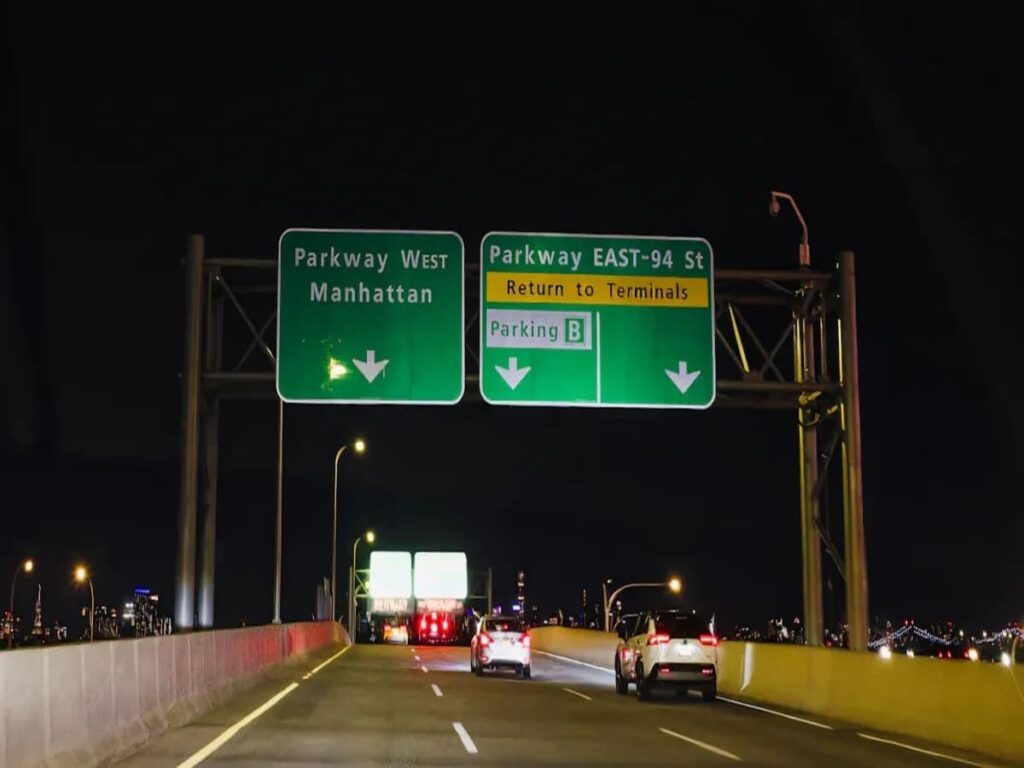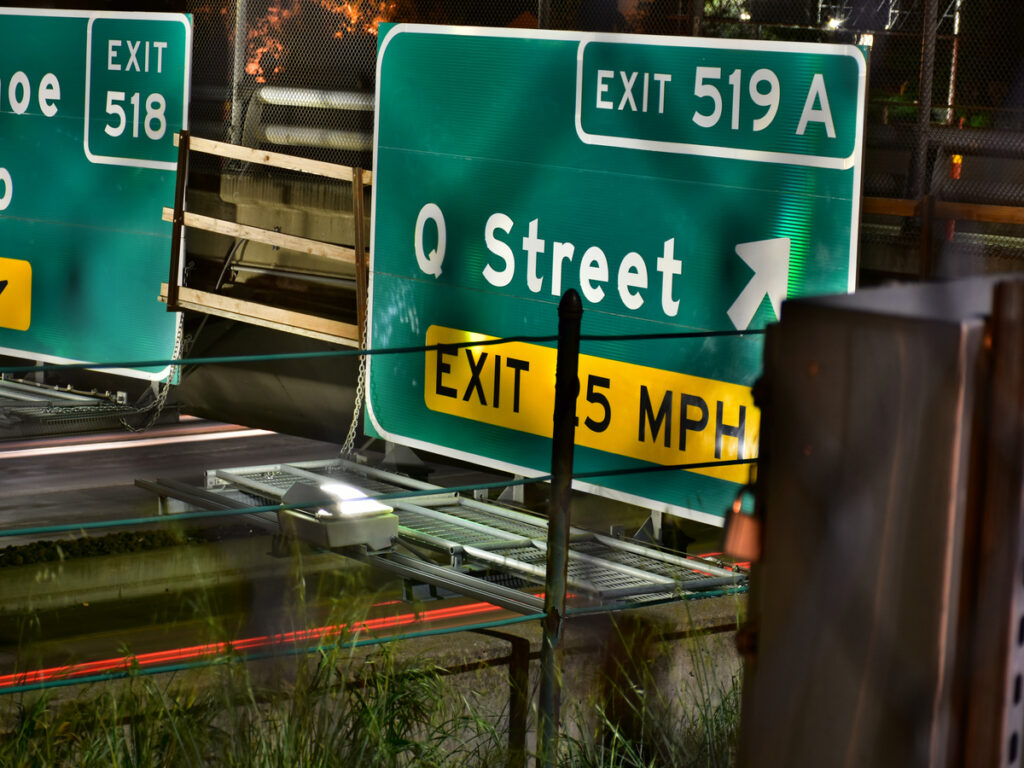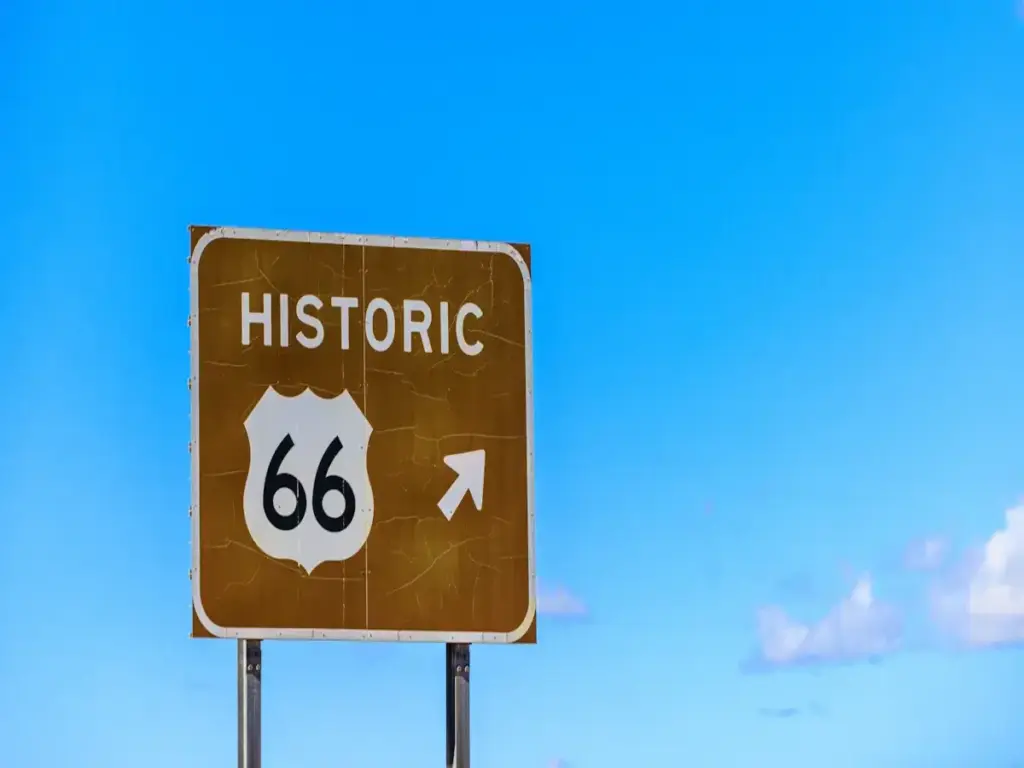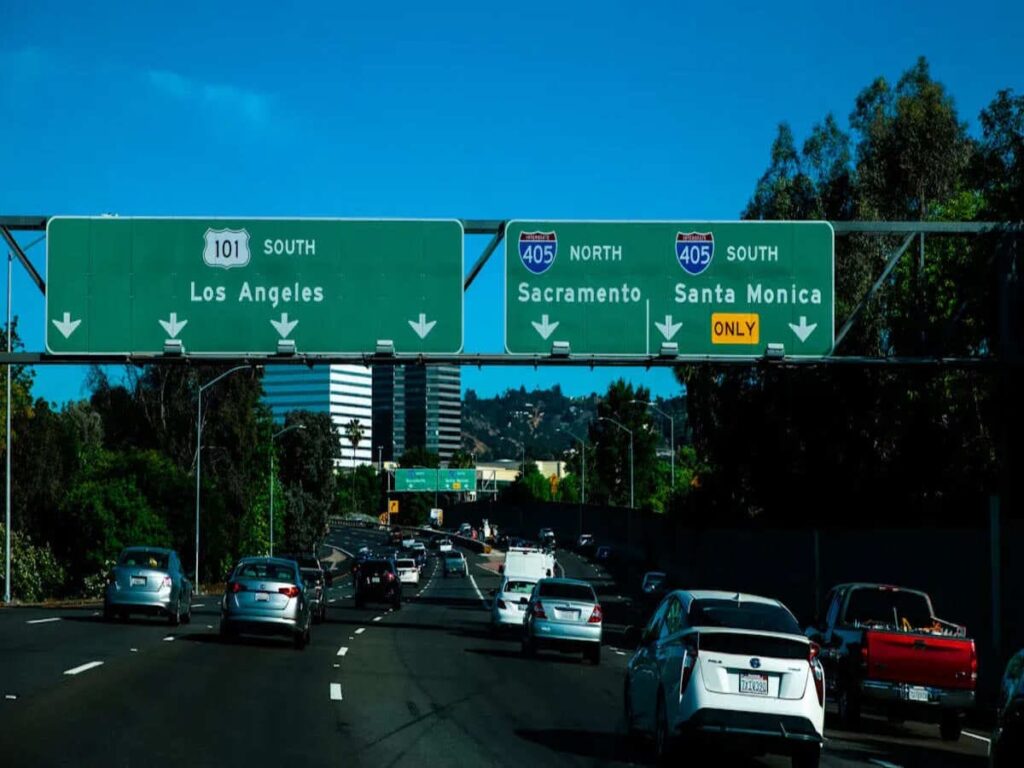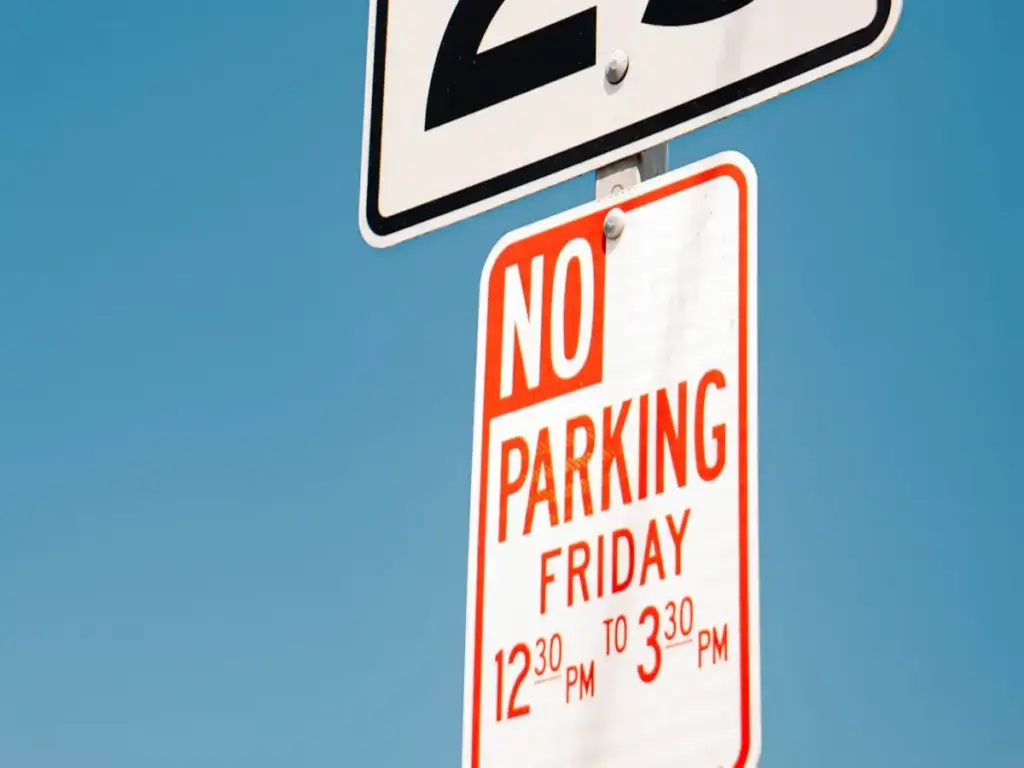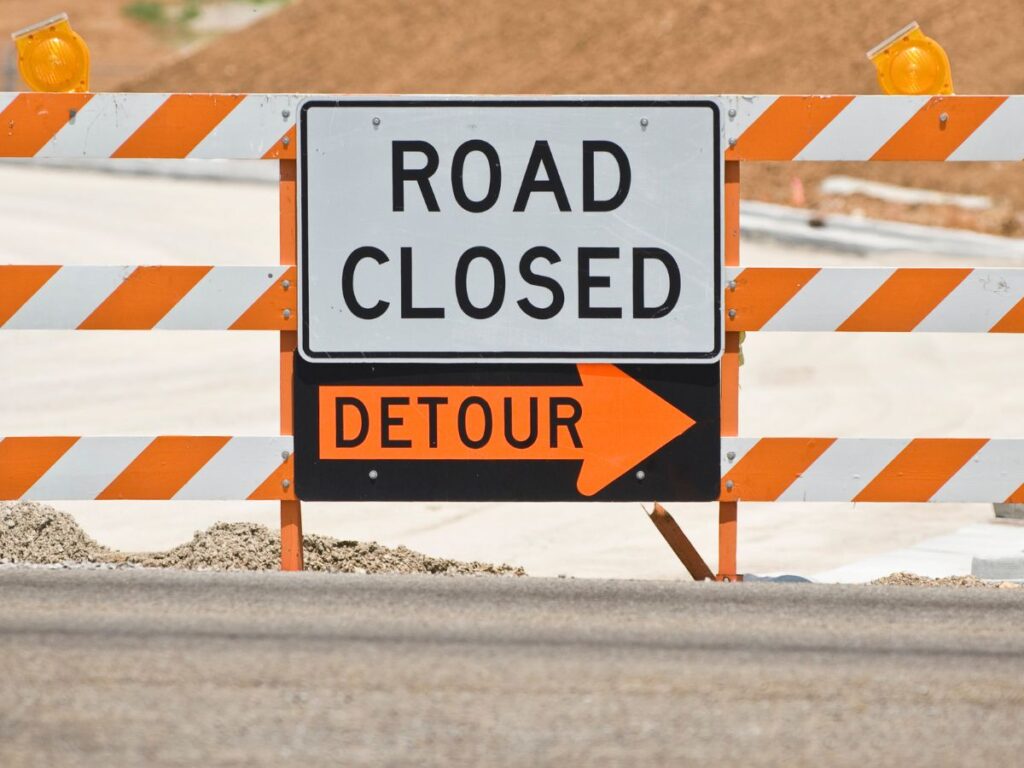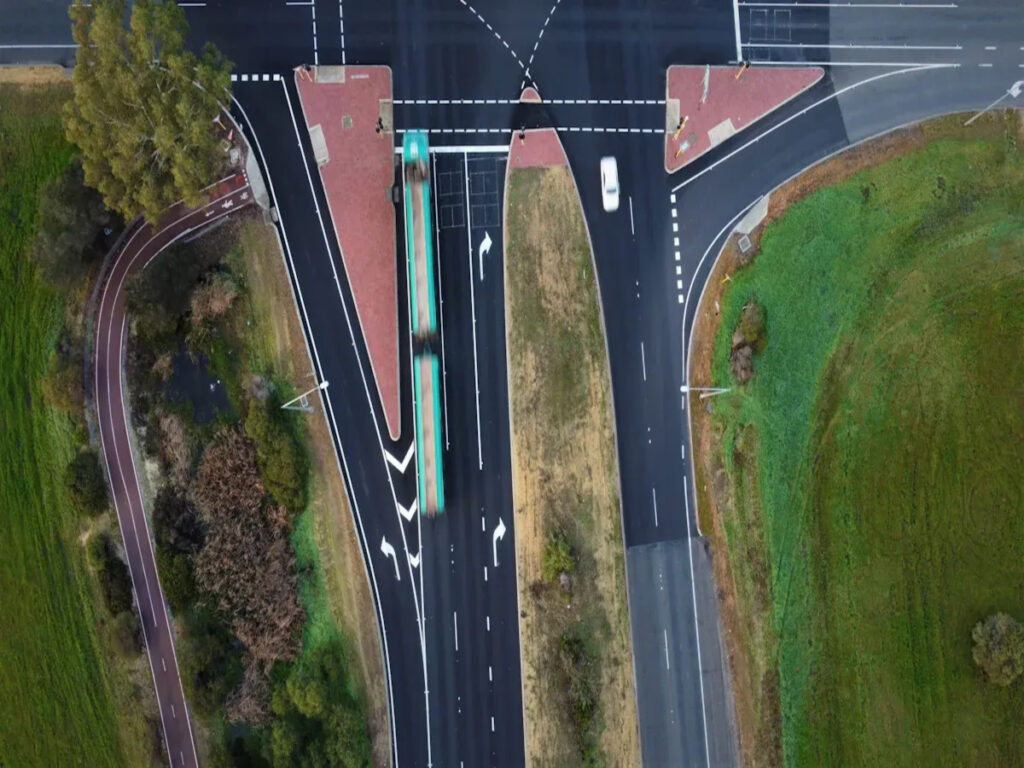
Выбор правильных дорожных знаков на перекрестках в Австралии помогает обеспечить безопасность дорог. Правильные дорожные знаки, выставленные на продажу, предотвращают аварии, сопоставляя тип перекрестка и местность.. Исследования показывают, что форма перекрестка и погода влияют на то, как передвигаются автомобили и насколько это безопасно..
- В Сиднее, Подсчеты трафика на перекрестках в реальном времени показывают, что поток транспорта зависит от схемы перекрестка и местных особенностей..
- Адаптивным системам, таким как SCATS, нужны правильные дорожные знаки и хорошие планы контроля, чтобы обеспечить безопасность дорог..
| Тип сбоя | Количество сбоев (2002-2007, Мельбурн) |
|---|---|
| Смертельная авария на светофоре | 68 |
| Аварии с серьёзными травмами на светофоре | 3,500 |
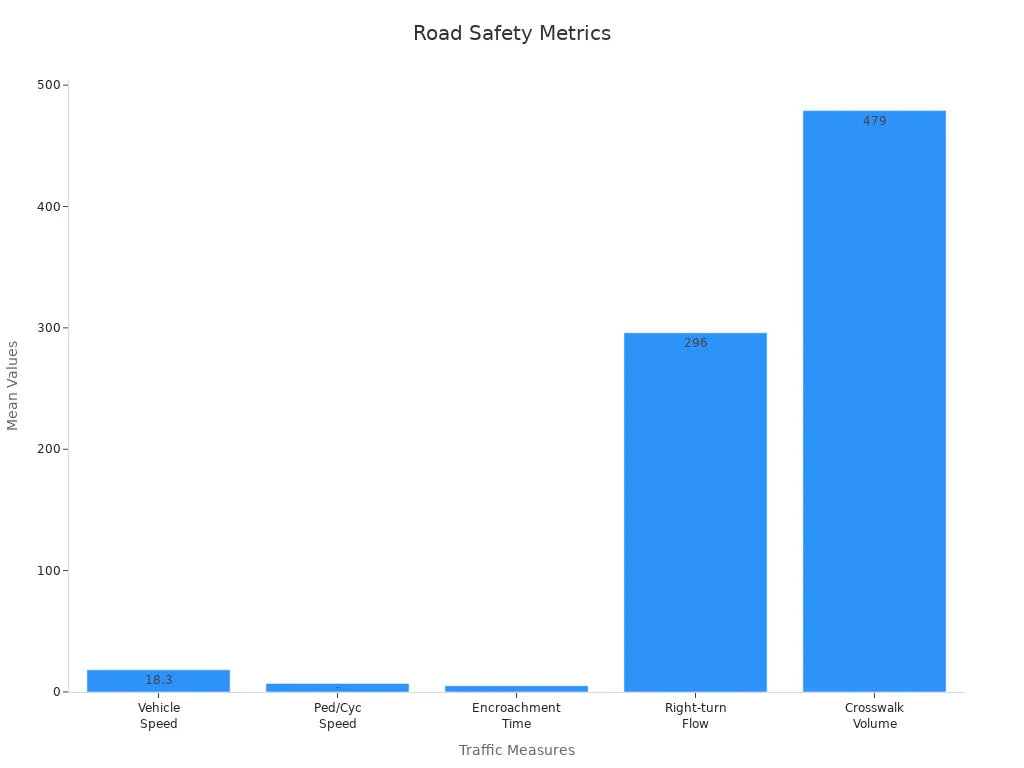
Вы можете видеть, что выбор правильный Знаки дорожного движения на перекрестках снижает риск для всех на дороге.
Типы пересечений
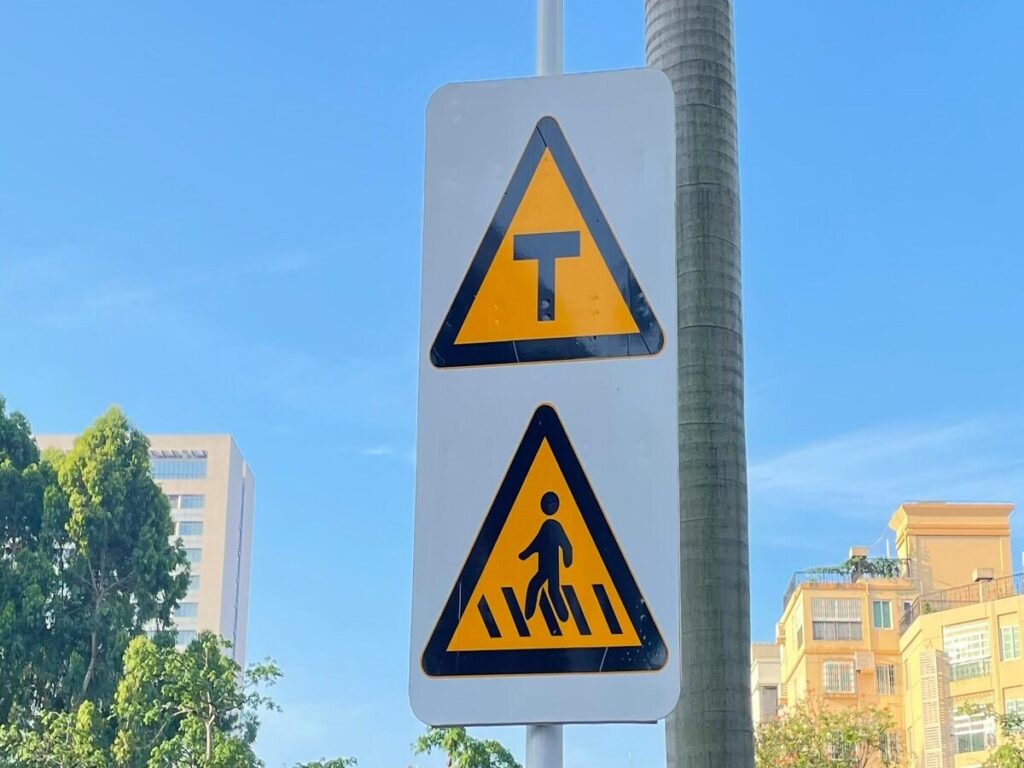
Т-образные перекрестки
Т-образные перекрестки выглядят как буква «Т». Одна дорога пересекает другую под прямым углом. В этих местах могут скрываться машины и делать поворот направо опасным.. Водители могут не видеть машины, едущие с обочины. Прозрачный Знаки Т-образного перекрестка Помогите водителям знать, что делать. Это предотвращает путаницу и помогает безопасному движению транспорта.. Если люди внезапно останавливаются или двигаются без предупреждения, Аварии могут произойти. Это хуже, когда это трудно увидеть.
Перекресток
Перекресток – это место, где две дороги пересекаются. Вы найдете их в городах и пригородах. Автомобили и люди могут встретиться здесь во многих точках.. Больше перекрестков в одном месте – больше аварий. Эти перекрестки сложные и загруженные..
- Если нет светофора, ДТП с пешеходами хуже. Это чаще происходит в пригороде, ранним утром или в будние дни..
- Светофоры также могут стать причиной проблем. Внезапные изменения и нарушение правил могут привести к большему количеству сбоев..
Кольцевые развязки
Карусели — это круги, которые заставляют автомобили двигаться.. Вы должны пропустить машины в круге первыми.. Такая конструкция заставляет автомобили ехать медленнее и встречаться реже.. Замена перекрестка на кольцевую развязку может предотвратить многие аварии с травмами. Это также может снизить количество сбоев более чем вдвое..
| Аспект | Подробности |
|---|---|
| Сокращение аварии | Травмы падают 25%-87% после установки кольцевой развязки |
| Трафик | Меньше ожидания, меньше остановок, и чище воздух |
| Проблема безопасности | Велосипедисты и пешеходы могут столкнуться с проблемами, особенно если у них есть инвалидность |
Кольцевые развязки хороши, если вы хотите более безопасных дорог и более плавного движения..
Многополосные перекрестки
Многополосные перекрестки имеют много полос для большого количества автомобилей.. Некоторые полосы поворачивают, а некоторые идут прямо. Больше полос означает больше мест, где машины могут попасть в аварию. В Квинсленде, ДТП при повороте направо составляют почти половину всех аварий на этих перекрестках. Специальные указатели правого поворота могут предотвратить большинство подобных аварий.. Больше полос движения, пересекающих друг друга, означает больший риск серьезных травм.. Четкие линии полосы движения и сигналы помогают водителям оставаться в безопасности.
Y-пересечения
Y-образные перекрестки делят одну дорогу на две, как буква «Ю». Водители могут запутаться в том, кто должен ехать первым.. Знаки и четкие линии помогают предотвратить внезапную остановку людей.. Важно убедиться, что водители хорошо видят и легко находят знаки..
Важно знать, какой у вас перекресток.. У каждого типа свои опасности и способы передвижения машин.. Если вы используете правильные знаки для каждого типа, вы помогаете обеспечить безопасность людей и улучшить движение транспорта.
Типы знаков для перекрестков
При выборе знаков для перекрестков, вам нужно знать, какие из них работают лучше всего. Дорожные знаки Австралии делятся на три основные группы.: регулирующий, предупреждение, и информационные знаки. Каждая группа помогает сделать перекрестки безопасными и простыми в использовании..
Нормативные знаки
Нормативные знаки сообщают водителям, что им следует делать.. К ним относятся остановка, Уступи дорогу, ограничения скорости, и контроль полосы движения. Эти знаки можно увидеть почти на каждом перекрестке в Австралии.. Они помогают всем соблюдать правила и обеспечивать безопасность дорожного движения..
- Т-образные перекрестки часто нуждаются в знаках остановки или пропуска.. Эти знаки показывают, кто должен идти первым.
- Остановка на перекрёстке, Уступи дорогу, а иногда и светофоры. Эти знаки помогают контролировать движение и предотвращать аварии..
- На круговых развязках должны быть установлены знаки уступки дороги при каждом въезде. Знаки контроля полосы движения помогают водителям выбрать правильную полосу движения.
- На многополосных перекрестках используется направление полосы движения., повернуть, и знаки ограничения скорости. Эти знаки помогают водителям оставаться на правильной полосе и избегать ошибок..
- На Y-образных перекрестках часто используются знаки уступи дорогу или остановки, чтобы направлять водителей..
Австралийские дорожные знаки должны следовать строгим правилам. The Австралийский стандарт как 1742 и Руководство по однородным устройствам управления движением (Mutcd) установить эти правила. Вы должны использовать знаки, соответствующие этим стандартам, чтобы дороги были законными и безопасными..
Исследования показывают, что установка нормативных знаков в «черных точках» может сократить число аварий со смертельным исходом. 30% и материальный ущерб падает на 26%. Больше, чем 90% людей следуют новым указателям. Когда вы добавляете разметку тротуара со знаками, некоторые перекрестки достигают 100% соответствие требованиям и самый низкий уровень сбоев.
Мобильные светофоры и временные знаки также должны быть сертифицированы.. Использование только сертифицированного оборудования разрешено.. В Брисбене, новые нормативные знаки улучшили транспортный поток за счет 35% и сократить время в пути на 27%. Это показывает, насколько важны австралийские дорожные знаки для безопасности и обеспечения хорошей работы дорог..
Предупреждающие знаки
Предупреждающие знаки сообщат вам об опасностях впереди. Эти знаки помогут вам замедлить ход или подготовиться к изменениям на дороге.. На всех перекрестках вы видите предупреждающие знаки., но они очень важны там, где водители могут не ожидать опасности.
- Т-образные перекрестки часто имеют предупреждающие знаки Т-образного пересечения.. Эти знаки предупреждают вас о необходимости снизить скорость и следить за поворачивающими автомобилями..
- На перекрестках используются предупреждающие знаки о перекрестке, предупреждающие вас о перекрестке впереди..
- На перекрестках с круговым движением перед въездом установлены предупреждающие знаки.. Эти знаки помогут вам подготовиться к уступке.
- На многополосных перекрестках используется слияние., полоса заканчивается, и знаки снижения скорости. Эти знаки предупреждают вас об изменении полосы движения или скорости..
- На перекрестках Y используются предупреждающие знаки пересечения Y, чтобы указать на развилку дороги..
Австралийские дорожные знаки должны использовать правильные цвета и формы для предупреждающих знаков.. Правила гарантируют, что вы сможете быстро увидеть и понять знак..
- The Система активного оповещения о сельских перекрестках (РИАВС) помогает водителям снижать скорость на сельских перекрестках. В этой системе используются электронные табло, которые включаются при приближении автомобиля.. Водители реагируют быстрее и ездят безопаснее, когда видят эти знаки..
- Исследования показывают, что знаки RIAWS «80 км/ч» снижают скорость больше, чем другие знаки.. Более низкие скорости означают меньше и менее серьезные аварии..
- Системы активного предупреждения, такие как RIAWS и ICWS в других странах, помогают водителям делать более безопасный выбор на перекрестках..
Вам необходимо использовать предупреждающие знаки, соответствующие перекрестку и местности.. Это помогает обеспечить безопасность и бесперебойность движения..
Информационные знаки
Информационные знаки помогут вам сориентироваться и узнать, что происходит на перекрестке.. Эти знаки включают названия улиц., стрелки направления, и знаки пешеходного перехода. Вы видите эти знаки на всех перекрестках., но они очень важны там, где дороги загружены или запутаны..
- На Т-образных перекрестках используются информационные знаки для обозначения названий улиц и направлений..
- На перекрестках используются указатели направления и названия улиц, которые помогут вам выбрать правильную дорогу..
- На кольцевых развязках есть знаки выхода и указатели направления полосы движения.. Эти знаки помогут вам выбрать правильный выход.
- На многополосных перекрестках используются верхние знаки, показывающие, какую полосу использовать в каждом направлении..
- На перекрестках Y используются стрелки направления и названия улиц..
Информационные дорожные знаки в Австралии должны быть четкими и легко читаемыми.. Правила определяют размер, цвет, и размещение этих знаков.
- Исследования показывают, что водители реагируют быстрее, когда видят четкие информационные знаки.. Исследования с использованием айтрекинга показали, что водители обращают больше внимания на знаки и дорожную разметку на перекрестках..
- Знаки и разметка пешеходного перехода помогают водителям заметить людей, переходящих дорогу.. Это делает всех безопаснее.
- Изменения в дорожной разметке и знаках могут сделать водителей более осторожными и улучшить правила проезда перекрестков..
Когда вы используете правильные информационные знаки, вы помогаете водителям и пешеходам передвигаться безопасно и легко. Хорошие знаки предотвращают путаницу и помогают всем соблюдать правила..
Вы всегда должны использовать австралийские дорожные знаки, соответствующие последним правилам.. Это обеспечит безопасность ваших дорог, юридический, и простой в использовании. Когда вы выбираете правильные дорожные знаки в Австралии, вы помогаете снизить количество аварий и сделать перекрестки более безопасными для всех.
Соответствие и стандарты
Национальные стандарты
Вы должны использовать национальные стандарты при выборе знаков для перекрестков в Австралии.. Основная книга правил — AS 1742. Здесь рассказывается, как проектировать и устанавливать дорожные знаки.. Это гарантирует, что все знаки будут выглядеть одинаково и хорошо работать везде.. КАК 1742 использует идеи из США. и Великобритания. но сделан для австралийских дорог. Если вы не соблюдаете эти правила, у тебя могут возникнуть проблемы с законом. Вы также можете потерять деньги на дорожные проекты.. В таблице ниже показаны некоторые важные национальные правила для дорожных знаков.:
| Категория | Числовое руководство / Показатель |
|---|---|
| Национальный стандарт | AS 1742.4–2008 по стандартам Австралии регулирует знаки контроля скорости.. |
| Городская скорость по умолчанию | 50 км/ч на национальном уровне (понижен с 60 км/ч для безопасности). |
| Скорость по умолчанию в сельской местности | 100 км/ч, с некоторым изменением состояния. |
| Скорость школьной зоны | 40 км/ч в большинстве штатов и территорий. |
| Толерантность к правоприменению | О 6 км/ч превышает лимит в городских районах, 9 км/ч по шоссе. |
| Типы знаков | Ограничение скорости, зона ограничения скорости, снятие ограничений, рекомендательные знаки. |
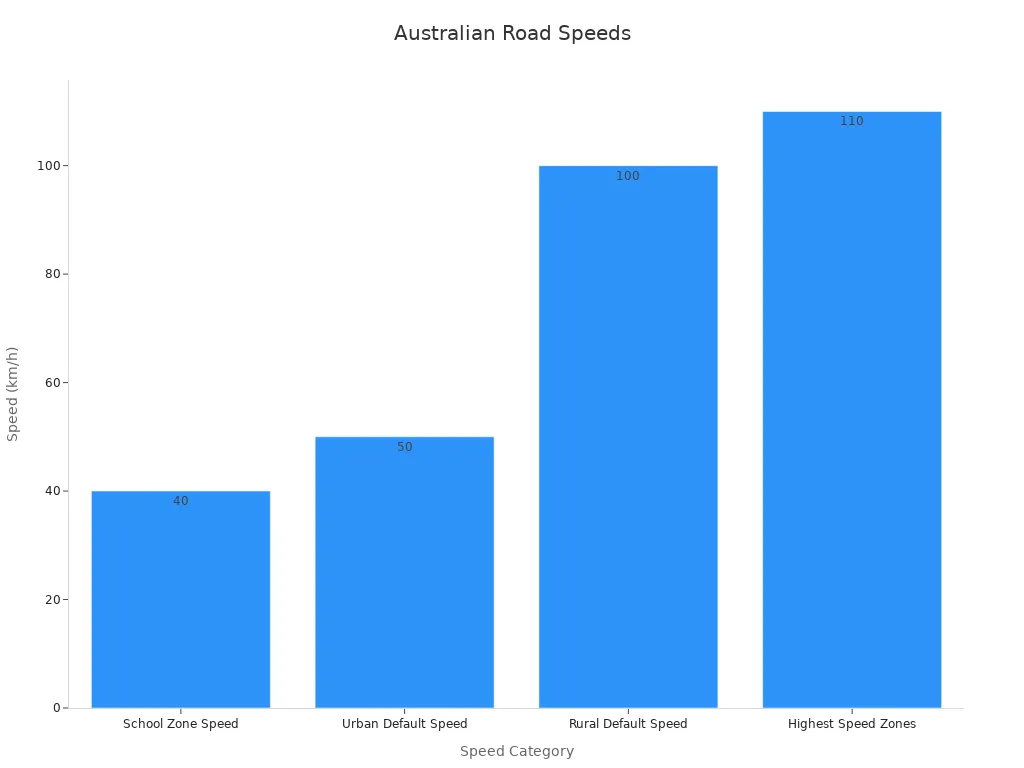
Государственные требования
В каждом штате Австралии могут быть дополнительные правила для дорожных знаков.. Вы должны проверить местные законы, прежде чем устанавливать новые знаки.. В некоторых штатах действуют разные ограничения скорости в загородных районах.. Штаты также устанавливают свои собственные правила для школьных зон и специальных дорог.. Всегда используйте новейшие руководства штата, чтобы убедиться, что ваши знаки являются законными..
Кончик: Если вы не соблюдаете государственные или национальные правила, Вы можете быть оштрафованы. У вас также могут возникнуть другие юридические проблемы.. Всегда проверяйте последние руководства перед сменой знаков..
Размеры и отражательная способность
Знаки должны быть подходящего размера и легко видимыми.. Это помогает водителям быстро их прочитать.. Знакам нужен правильный шрифт, форма, и цвет. Ас 1744 Шрифт легко читается при быстрой езде. Формы и цвета, как желтые бриллианты, Помогите водителям заметить знаки. Знаки должны быть яркими ночью и в плохую погоду.. Сорт 3 Светоотражающая пленка самая яркая и используется для важных знаков.. Исследования показывают, что более яркие знаки могут снизить количество ночных аварий почти на 10%. 30%. Вам следует выбирать материалы, которые хорошо работают в вашей местной погоде.. Жара и дождь могут сделать вывески менее яркими.
| Отражающий класс | Австралийский стандарт (AS/NZS 1906) | Яркость (кд·лк⁻¹·м⁻²) | Использование |
|---|---|---|---|
| Начальный уровень | Сорт 2 | ~ 180 | Самые обычные дорожные знаки |
| Средний уровень | Сорт 1 | ~ 50 | Менее подходит для критических признаков. |
| Премиум | Сорт 3 | Самый высокий | Важные знаки, требующие максимальной видимости |
Примечание: Официальные правила часто меняются.. Всегда проверяйте новейшие стандарты, прежде чем покупать или устанавливать новые знаки..
Факторы места и установки

Видимость и размещение
Каждый знак на перекрестке должен быть хорошо виден.. Хорошее расположение позволяет водителям заранее заметить знаки.. Это помогает им вовремя реагировать. Если знаки слишком высокие или слишком низкие, водители могут их не видеть. Это большая проблема, когда движение занято.. Исследования показывают, что размещение указателей направления на углах помогает. Водители могут лучше видеть эти знаки и легче их читать.. Это очень полезно для людей со слабым зрением.. Если знаки на перекрестках всегда находятся в одном и том же месте, каждый может найти свой путь. Это верно, даже когда машин много..
Хорошее освещение делает дорожные знаки заметными ночью или в плохую погоду.. Знаки с подсветкой и отражающими поверхностями легче читаются.. Это помогает водителям делать безопасный выбор при любых видах дорожного движения..
Объем и скорость трафика
Оживленные дороги и быстрые автомобили требуют особого внимания. Когда много машин, четкие знаки помогают избежать путаницы. В Австралии, Знаки с динамическим отображением скорости хорошо работают на дорогах с интенсивным движением. Эти знаки напоминают водителям о необходимости снизить скорость. Они полезны вблизи крутых поворотов или школьных зон.. Исследования показывают, что водители снижают скорость, когда видят эти знаки.. Это снижает вероятность аварий. Вы должны размещать знаки там, где их увидит большинство водителей.. Хорошие места находятся рядом с перекрестками или там, где соединяются полосы движения..
Превышение скорости по-прежнему остается основной причиной дорожно-транспортных происшествий в Австралии.. В Квинсленде, до 94% водителей признались, что немного превысили скорость. Установка правильных знаков в оживленных местах помогает контролировать скорость. Это обеспечивает безопасность всех.
Условия окружающей среды
Погода и свет могут повлиять на то, насколько хорошо водители видят знаки. Дождь, туман, и яркое солнце может сделать знаки трудноразличимыми. Вы должны использовать знаки из прочных материалов.. Алюминиевый сплав или нержавеющая сталь не ржавеют и не ломаются.. Яркие светодиоды и отражающие поверхности помогают знакам быть заметными в дождь или туман.. Некоторые знаки могут затемняться ночью, чтобы не светиться слишком сильно..
Проверка и очистка знаков часто делают их легко читаемыми.. Разместите знаки на нужной высоте и расстоянии от перекрестка.. Это не позволит чему-либо блокировать обзор.. Если вы соблюдаете местные правила, ваши знаки будут хорошо работать в любую погоду и на дорогах.
Поиск дорожных знаков на продажу
Когда вы ищете дорожные знаки на продажу, вы хотите быть уверены, что получаете лучшее качество и обслуживание. Правильный выбор поставщика поможет вам соблюдать правила безопасности и обеспечит безопасность ваших дорог для всех.. Вот что вам следует учитывать:
Выбор поставщика
Начните с поиска поставщиков с хорошей репутацией в области дорожных знаков в Австралии.. Надежные поставщики предлагают к продаже дорожные знаки, соответствующие всем австралийским стандартам.. Вам следует проверить, есть ли у поставщика опыт работы с крупными проектами и местными поставками.. Такие компании, как OPTRAFFIC, поставляют дорожные знаки для крупных мероприятий и имеют локальные сети., так что вы получаете быстрое обслуживание и проверенную продукцию.
Кончик: Хороший поставщик предоставит сертификаты, протоколы испытаний, и доказательство того, что их знаки соответствуют AS 1742 и стандарты MUTCD. Это облегчит утверждение вашего проекта и повысит доверие со стороны вашего сообщества..
Качество и сертификация
Вам нужны безопасные дорожные знаки, долговечный, и легко увидеть. Сертифицированные знаки соответствуют строгим правилам, таким как AS/NZS. 1906 и как 1742. Эти правила касаются отражательной способности, размер, и цвет. Знаки с классом 3 светоотражающая пленка светится ярче и лучше всего работает на дорогах с интенсивным движением. Поставщики, соблюдающие эти стандарты, помогут вам избежать юридических проблем и обеспечить безопасность ваших дорог..
- Сертифицированные знаки:
- Прослужат дольше и останутся яркими в любую погоду.
- Сделайте дороги безопаснее, помогая водителям видеть и соблюдать правила.
- Принесите с собой документы, необходимые для тендеров и финансирования..
Регулярная чистка и проверки обеспечивают хорошую работу ваших вывесок.. Поставщики, предлагающие консультации по техническому обслуживанию, помогут вам поддерживать дорожные знаки в Австралии в отличной форме..
Настройка и поддержка
Каждая дорога индивидуальна. Вам могут понадобиться специальные дорожные знаки на продажу для особых перекрестков или местных нужд.. Хорошие поставщики предлагают индивидуальный дизайн., быстрые котировки, и поддержка после покупки. Они помогут вам выбрать подходящие материалы и размеры для вашего региона.. Если у вас есть вопросы, дают четкие ответы и помогают с оформлением документов.
Выбор поставщика, который предлагает поддержку и индивидуальные опции, экономит ваше время и деньги.. Вы получаете знаки, соответствующие вашим потребностям и отвечающие всем правилам..
Вы можете сделать перекрестки безопаснее, выполнив несколько простых вещей. Первый, узнайте, что это за перекресток, выберите знаки, которые легко увидеть, и соблюдайте правила.. Убедитесь, что ваши знаки соответствуют правилам Austroads и местным правилам относительно легкости их чтения и продолжительности сообщения.. Всегда думайте о таких вещах, как, например, насколько ярко здесь и как быстро движутся машины.. Выбирайте хороших поставщиков, которые продают сертифицированные вывески.. Не забывайте часто проверять и ухаживать за своими знаками и соблюдать закон, чтобы все были в безопасности.. Если перекресток сложный, спросите экспертов или воспользуйтесь официальными руководствами, чтобы убедиться, что вы соблюдаете все правила безопасности и помогаете своему сообществу..
Часто задаваемые вопросы
Какой самый важный стандарт для дорожных знаков в Австралии??
Вы должны следовать как 1742 для всех дорожных знаков. В этом стандарте рассказывается, как проектировать, место, и использовать знаки. Это поможет вам сохранить дороги безопасными и законными.
Как правильно выбрать размер дорожного знака??
Вам следует проверить австралийский стандарт для каждого типа знаков.. Стандарт дает правильный размер в зависимости от скорости дороги и местоположения знака.. Большие знаки помогают водителям видеть их издалека..
Можете ли вы использовать специальные дорожные знаки для продажи на перекрестках??
Вы можете использовать пользовательские знаки если они соответствуют австралийским стандартам. Изготовленные на заказ знаки помогают удовлетворить местные нужды или предупреждают о специальных предупреждениях.. Всегда убедитесь, что ваш индивидуальный знак легко читается и использует утвержденные цвета и символы..
Как часто нужно проверять и чистить дорожные знаки?
Вы должны проверять и чистить знаки каждые несколько месяцев.. Грязные или поврежденные знаки трудно увидеть.. Регулярные проверки помогут вам выявить проблемы на ранней стадии и обеспечить правильную работу ваших знаков..

